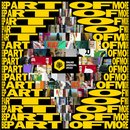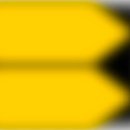Become a Commercials Director
Everything you need to know about becoming a director of ads, from professional directors

Directing TV or film adverts is a dream job for many aspiring creatives, especially those with backgrounds in photography or moving image. It’s a role that places you in the heart of the action, condensing all your creative knowledge and your film and video skills into a 15 or 30-second spot for a major brand. For top directors, budgets are large and briefs can be challenging but rewarding.
On a technical level, there isn’t much practical difference between directing commercials and directing other types of moving image, like TV, feature films or music videos. In fact, there’s a large cross-over between these spheres, with many directors of film or music video also dabbling in ad production. For many aspiring filmmakers, directing ads is also a way they balance being able to do their personal or more creative projects. The work of a commercials director will involve everything from developing initial concepts to overseeing a cast and crew on set, right through to post-production tasks like steering and signing off on editing and visual effects. Shoots themselves can be demanding and can involve a lot of international travel, but can be incredibly rewarding in terms of career progression and creative fulfilment.
We spoke to four commercials directors who have worked on films for Panasonic, Nike, Toyota and Net-a-Porter about what it takes to break into this career path, and how to excel once you’ve got a foot in the door.
Don’t just dream of directing — get started whatever way you can
Becoming a film director of any kind is about gaining practical experience and showing what you can do. For commercials directors, that can mean cobbling together a low-budget short film with some friends, or getting any kind of on-set production experience with a film crew. Meena Ayittey, film director with Great Guns, has directed ads for Olay, Panasonic and more, and she says it’s all about making as much as you can. “Create, create, create!” she says. “It's like any skill: the more you do it, the better you become.” She got her start by making her own short films, coming first from a background as a 3D VFX artist and motion designer. “I think any experience you can get on set, either by being part of a film crew or by making your own projects is invaluable.”
Good ideas are more important than big budgets
Global advertising can come with big budgets to play with, but you don’t necessarily need a lot of funds to get going. One good idea can go far, according to Francois Rousselet, a director with Division who has worked with brands like Heineken, Nike and Just Eat. He got his start by directing music videos at a time when low budget productions were making a real impact online. Strong creative ideas were crucial in making a film stand out. “People had to be super creative because you’re working with such a low budget,” he explains. “For my breakthrough music video with [electro group] Justice, I had nothing, my budget was zero. I quickly started getting attention because of that video, because something that started so small was becoming big, and suddenly I had access to Madonna and Kanye West. Because artists are always watching out for what’s new and they jump on new, emerging talent.”
Connect and collaborate with other creatives
Commercial productions are big, many-layered projects that involve a lot of different people. A director should be able to stand at the centre of this, and that means building networks with other creatives. Karien Cherry of Outsider, who has directed commercials for brands such as Heineken and Toyota, explains: “This is not an industry where you work alone. A big part of your success is going to be finding, working with and building relationships with other creators and other filmmakers. My path worked out because I aligned myself with a really reputable production company [Giant Films] very early on. So realise that your network is super important. I wouldn't be in the position I am today if I hadn't found people who believed in me and saw potential and opened doors for me.”
Aaron Christian, a director who has worked with brands like Puma, Belstaff and Net-a-Porter, similarly launched his career through collaboration. He first started directing by working with his brother, who was a fashion stylist at the time. This helped him build up a body of work and a style of his own. “We were experimenting, doing video tips and using a small camcorder to shoot videos, and that was my first foray into advertising. I didn’t even know what advertising was at the time, but I loved using creative video and moving image skills to tell stories. After that, I read every single book on marketing and advertising and became really passionate about it.”
Find your own voice
Once you’ve started making creative work, it’s time to think about what your directorial style is like. Great directors will be well versed in the history of film and video, but it’s up to you what kind of director you’d like to be, says Ayittey. “It's great to be influenced by techniques or styles, but ultimately don't try to copy anything or anyone,” she says. “There can be a huge temptation often when you start as a director to try and imitate Quentin Tarantino or Michel Gondry and often you end up with something that looks like a budget version of Tarantino or Gondry. It's much better to be an authentic version of yourself than a knock off version of anybody else. You have to find your own voice and your own style, which usually comes with constantly creating.”
Don’t be afraid to think beyond the classic ad campaign
Advertising is changing all the time, and to become indispensable in the industry, you’ll need to stay one step ahead of the curve. The way to do this, says Christian, is to work with different kinds of moving image to sharpen your skills and your voice. “Moving image is evolving so quickly,” he says. “When I started, it was just commercials, music videos and film, and now it seeps into loads of stuff. Early on in your creative career, I would say try to work within multiple mediums. Try to surround yourself with different creatives or work within the creative industry because it takes a while to figure out your style, sensibility and voice. That will continually evolve and allow you to stay fresh in your creative approach.”
Rousselet agrees, and says it’s all about getting your work out into the world. “Many greats have started by making music videos, like Spike Jonze for instance, because the thing with music videos is that you can put your mark on them,” he says. “If you have a good idea, or a good concept, you can really show that, and that’s what matters the most. The platforms have multiplied now, so you can post your unknown music video on a platform and become huge. You could even DM an artist and tell them you’d like to do a music video for them for free! I’m not saying anyone should have to work for free, but I still do that sometimes — put all my budget into the video.” In this way, you can use other kinds of moving image to start building a style and a portfolio for your commercial career too.
Get more advice and tips from professional creatives and learn how you can land the creative job of your dreams.



